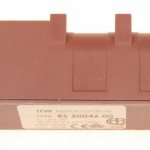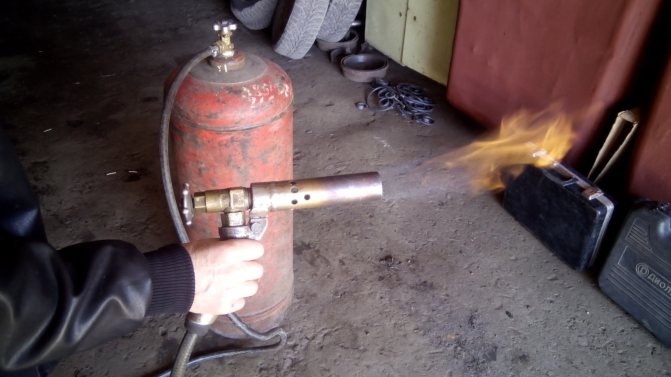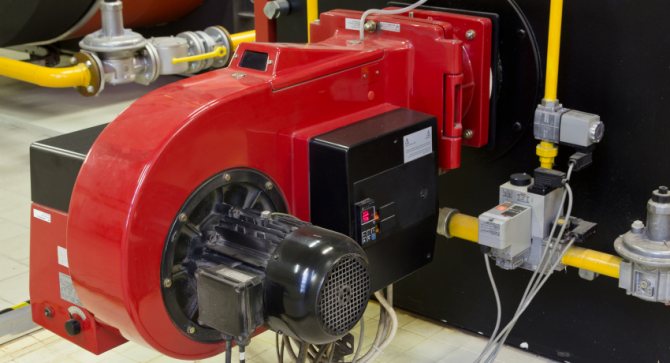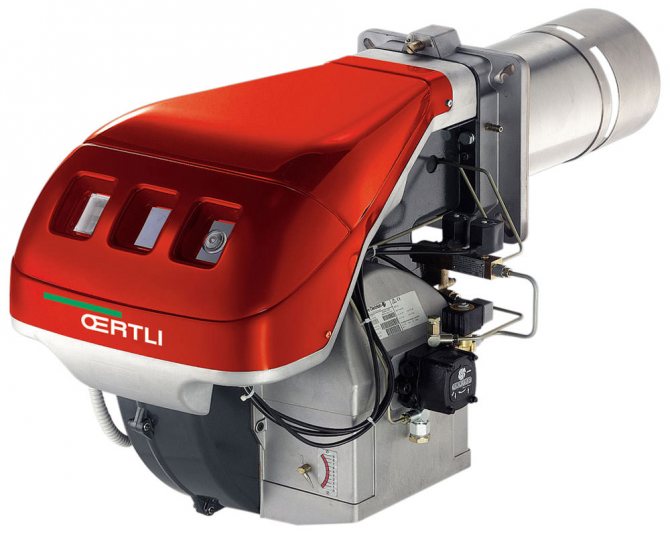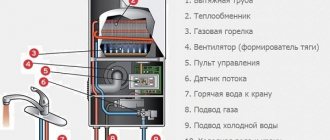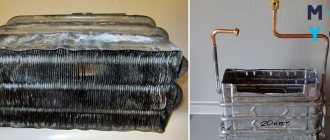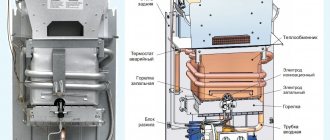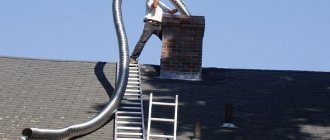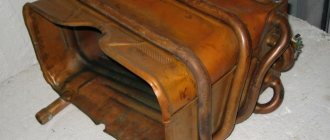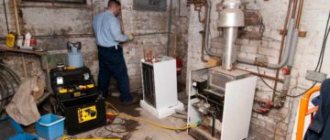Functions and types of electric ignition
The schemes of modern ignition systems are different, but they have the same basis - the use of candles powered from a household electrical network of 220 V. When you turn the switch or press a button, the electrical circuit is closed, the starting candle creates a spark on the burner with gas access. Electric ignition is divided into automatic and mechanical, which is also called semi-automatic.
The principle of operation of the igniter of gas stoves:
- The pressed button generates a voltage applied to the capacitor region.
- The capacitor charge is turned on.
- The voltage level on the thyristor rises.
- The process of discharging the capacitor starts.
- The spark gap is triggered to release a spark that ignites the blue fuel.
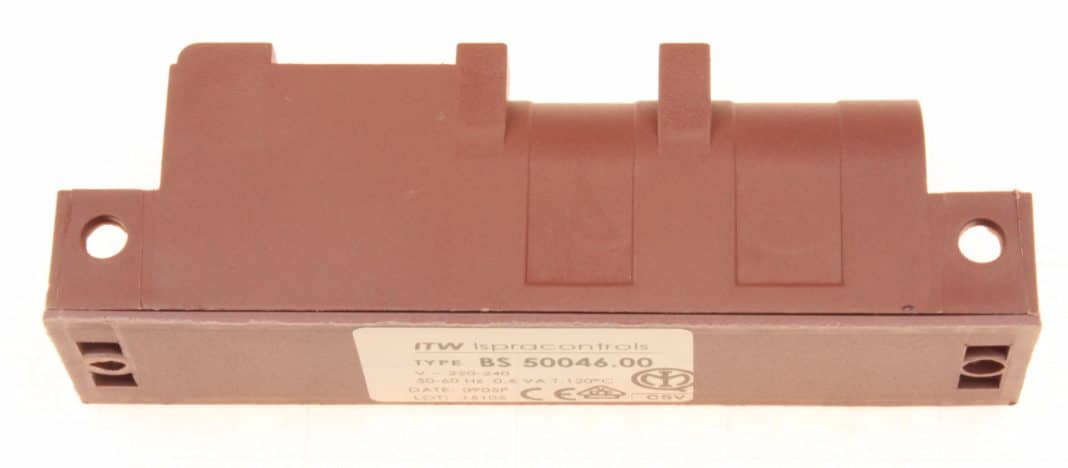
What does the ignition block look like for a gas stove
In order for the process to be implemented, the stove must be connected to the network, through a separate outlet from the line with a three-core wire, with a cross section of at least 1.5 mm with grounding. In the switchboard, a 16A circuit breaker is installed on this line.
Mechanical
For the operation of mechanical ignition, two types of transformers with 4 or 6 contacts are used. In the first case, the spark is cut only for the burners, in the second - additionally for the oven.
The scheme of operation of the mechanical block of ignition gas for the stove:
- Includes a button on the front panel, powered by electricity.
- The process of charging the capacitor starts using the rectified voltage.
- The accumulation of charges in the farads begins, and the voltage of the main thyristor increases accordingly.
- When the voltage peak is reached, the capacitor starts to discharge with the heating of the primary transformer winding, which triggers the spark gap triggering with the release of a spark that ignites the gas in the open burner.
For mechanical ignition, a piezoelectric element is required, therefore this type is often called piezo ignition. Today it is already difficult to find such a stove with mechanics in the retail network among the new products of gas equipment manufacturers. The principle of mechanical control is already becoming obsolete, since it is not entirely convenient due to the fact that in order to connect the unit, ignite the gas stove, in addition to turning the gas supply regulator, you also need to have time to simultaneously press the spark starter on the panel.
Auto
Such ignition differs from mechanical ignition in the physical process of generating a spark, it does not require an ignition button, and the gas is ignited simultaneously with the rotation of the knob. This system is more complex, since both the gas supply and the appearance of a spark occur simultaneously, and the process of spark formation is multiple and performs about 50 electrical impulses per minute, accompanied by clicks. This option is considered the most convenient, is more often used in hobs and very rarely for ovens. The control mechanism can be seen by removing the flame cutter from the burner, it is located approximately on the side in a small niche.
The scheme of its automatic ignition:
- To generate a spark, the user slightly retracts the rotary knob of the desired burner and scrolls it to supply gas;
- at this moment, the spark plug located in the burner recess closes and ignites the gas coming out of the nozzle openings.
Possible breakdowns
Turning on the oven is not always successful. This can happen for several reasons:
- The burner may be clogged. In this case, the heat control sensor does not work, since fire does not fall on it. As a result, the flame goes out. After thorough cleaning of the part, the stove will turn on easily.
- Severe depletion of thermocouple. The reason is that the gas supply to the oven is very obstructed.
- If the gas valve has received mechanical damage, it must be replaced. This part cannot be repaired.
- The timer very often fails. The reason is long-term use of the product. The main symptoms of such a breakdown are considered to be periodic shutdown or complete shutdown. To detect a malfunction, first check the continuity of the thermocouple. Then the condition of other parts associated with the flame detector.
- If, after heating, the oven starts to go out, it is necessary to adjust the flame by setting the minimum position. This problem arises from insufficient heating of the fire. As a result, the flame is automatically turned off.
Important! Quite often there are cases in which the flame does not completely cover the burner. In one part, it is missing. In this situation, it is required to stop the gas supply. Then ventilate the room, repeat all operations starting from the initial stage of ignition. Complete ignition is required for the oven to function properly.
Manufacturers produce different models of ovens. Some are very difficult to set on fire. However, their advantage is complete safety and great functionality. It is very important to follow the technological sequence of operations, to be attentive to such devices.
Delicious recipe! Classic borscht recipe with photo with pork
The process of setting fire to the oven in a gas stove depends on the type and characteristics of the oven. Most modern models have automatic or semi-automatic electric ignition and the "gas control" function, which greatly simplifies the process of turning on the oven and helps prevent gas leaks.
—
GENERAL LABOR PROTECTION REQUIREMENTS
1.1. To perform work using a gas burner, an employee is allowed to be at least 18 years old, who has passed a medical examination and has no contraindications for health reasons, has the necessary theoretical and practical training, has passed introductory and primary at the workplace briefings on labor protection and training under a special program, certified qualification commission and received admission to independent work. 1.2. An employee performing work using a gas burner (hereinafter referred to as an employee) must periodically, at least once a year, undergo training and testing of knowledge of labor protection requirements and receive admission to work of increased danger. 1.3. An employee, regardless of qualifications and work experience, must undergo repeated instruction on labor protection at least once every three months; in case of violation of labor safety requirements by an employee, as well as during a break in work for more than 30 calendar days, he must undergo an unscheduled briefing. 1.4. An employee who has not undergone timely instructions and testing of knowledge of labor protection requirements is not allowed to work independently. 1.5. An employee who performs work using a gas burner, admitted to independent work, must know: safety measures when using gas cylinders and burners. Rules, norms and instructions for labor protection and fire safety. Rules for the use of primary fire extinguishing equipment. First aid methods in case of accidents. Internal labor regulations of the organization. 1.6. An employee sent to participate in work unusual for his profession must undergo targeted instruction on the safe performance of the forthcoming work. 1.7. The employee is prohibited from using tools, devices and equipment, the safe handling of which he is not trained. 1.8. During the performance of work using a gas burner, the worker may be affected mainly by the following hazardous and harmful production factors: - the possibility of a fire when using a gas burner; - the possibility of an explosion of a gas cylinder; - the surfaces of the gas burner heated to a high temperature; - uncomfortable working position. 1.9. An employee performing work using a gas burner should be aware that during work the most likely cause of injury may be burns from an open flame from a gas burner. 1.10.To protect against the effects of hazardous and harmful production factors, the employee must use overalls, safety shoes and other personal protective equipment. 1.11. To prevent the possibility of a fire, the employee must comply with the fire safety requirements himself and not allow other employees to violate these requirements; smoking is allowed only in specially designated areas. 1.12. The employee is obliged to comply with labor and production discipline, internal labor regulations; remember that drinking alcohol tends to lead to accidents. 1.13. If an accident occurs with any of the employees, then the victim must be provided with first aid, report the incident to the manager and preserve the situation of the incident, if this does not pose a danger to others. 1.14. The employee, if necessary, must be able to provide first aid, use a first-aid kit. 1.15. To prevent the possibility of illness, the employee should follow the rules of personal hygiene, including thoroughly washing his hands with soap and water before eating. 1.16. It is not allowed to perform work while intoxicated or in a state caused by the consumption of narcotic drugs, psychotropic, toxic or other intoxicating substances, as well as drinking alcoholic beverages, using narcotic drugs, psychotropic, toxic or other intoxicating substances at the workplace or at work. time. 1.17. An employee who has committed a violation or failure to comply with the requirements of the instruction on labor protection is considered as a violator of production discipline and may be brought to disciplinary liability, and depending on the consequences, to criminal liability; if the violation is related to the infliction of material damage, then the perpetrator may be held liable in accordance with the established procedure.
—
Electric ignition circuits
Depending on the type of electric ignition, two variants of the schemes of the gas stove ignition units are distinguished:
- Single spark ignition - when the ignition button is released, a single spark is generated.
- Multi-spark - by turning the knob of the burner, a spark is continuously generated.
The first scheme works like this:
- when the ignition button is pressed, the mains voltage is applied to the capacitor, it is charged;
- when the button is released, the capacitor contact is connected to the transformer;
- the reverse process is performed - the discharge of the capacitor through the primary winding of the transformer;
- a voltage of about 10 kV is generated on the secondary transformer winding;
- a spark is formed;
- pressing and releasing the button will repeat the process.
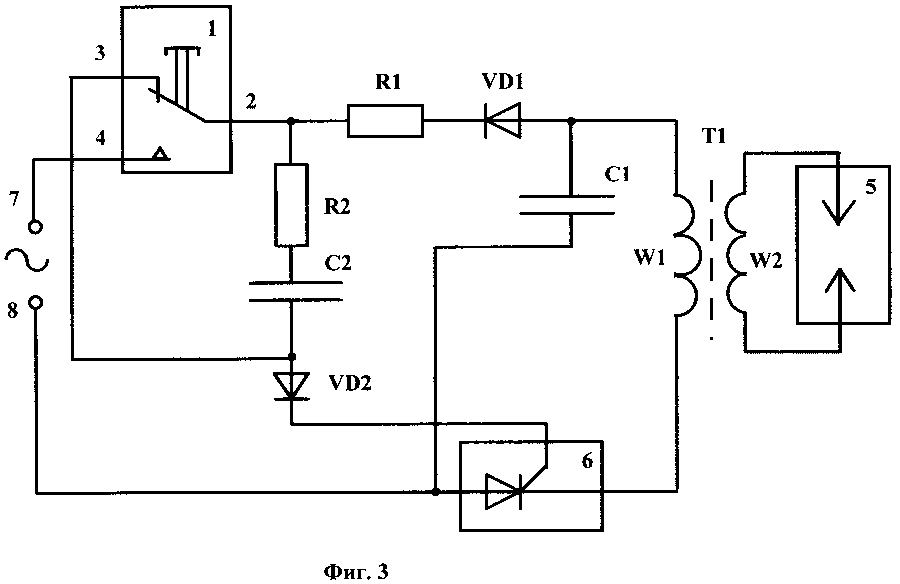

The second scheme works as follows:
- with a positive half-wave of the mains voltage, a capacitor is charged through the diodes;
- with a negative half-wave, the cathode is connected to the "minus" half-wave, and a control current is supplied to the control electrode of the thyristor through a resistor;
- the thyristor opens and the capacitor is discharged to the high-voltage transformer, which produces a spark;
- a voltage of about 10 kV appears on the secondary transformer winding;
- while holding the gas supply knob, the process is carried out at a frequency of 50 Hz (1 spark per second).
Note! There is a 4-ex or 6-electrode ignition. The number of electrodes depends on the number of secondary windings of the step-up transformer
Six-electrode ignition units are usually used in combined types of stoves in conjunction with an oven. Two of the six electrodes are located in the oven and work precisely to ignite it.
Rules for using a gas stove
17.09.2012 11:39
Department of construction, energy and housing and communal services
Rules for using a gas stove
Subscriber requirements
MUST:
1. It is allowed to operate gas stoves after being instructed in the technical office of JSC Vologdagaz.
2. Keep the gas stove clean and in good working order. Do not obstruct the stove with foreign objects.
3. Monitor the work of the gas stove.
4. To inspect and repair the gas pipeline and gas stove, allow the employees of OJSC “Vologdagaz” to enter the apartment upon presentation of their service certificate.
5. Economically use gas, timely pay for its cost and the cost of maintenance of gas equipment.
6. If the gas supply is suddenly cut off or if the smell of gas appears in the room, you should immediately stop using gas, turn off all taps on the gas stove and the gas pipeline (valve on the cylinder), open the vents or windows to ventilate the room, call the emergency gas service by phone 04 ( outside a gas-polluted room). Do not light fire, do not smoke, do not turn on electric lights and electrical appliances, do not use electric bells.
IT IS FORBIDDEN:
1. Leave a working gas stove unattended at night.
2. Use for sleeping and resting the premises where the gas stove is installed (kitchens, etc.)
3. Place objects on the gas pipeline and tie up ropes.
4. Allow preschool children to use gas appliances, persons who do not control their actions and do not know the rules for using these appliances.
5. Use a gas stove with a closed window (transom) and a grate of the ventilation duct in the kitchen.
6. Use gas for other purposes (for space heating).
7. Use a faulty gas stove.
8. Unauthorized, in addition to OJSC "Vologdagaz", to rearrange, replace and repair gas appliances and equipment.
9. Redevelop the premises where gas appliances are installed, without agreement with OJSC Vologdagaz.
TURNING ON THE GAS STOVE:
1. Before turning on the gas stove - ventilate the room and make sure that the taps on the gas stove are closed.
2. Open the valve on the gas line in front of the stove or the valve on the cylinder.
3. Bring a lighted match (electric or piezo lighter) to the burner, and then press the corresponding knob on the gas stove and turn it half a turn. When igniting, make sure that the gas ignites at all burner openings.
4. Before using the oven - open the door and ventilate it for 2-3 minutes.
TURNING OFF THE GAS RANGE:
1. Close the valve on the gas line or the valve on the cylinder.
2. Turn off the taps on the gas stove or the oven tap.
| Next> |
What you need to know before connecting the Ariston gas column
Ariston water heaters are quite economical and have low gas consumption. At the same time, the boiler has a wide range of operational capabilities.
Before you start using the Ariston geyser, you must do the following:
- make sure that the apartment (house) has good ventilation;
- check the water pressure - if the pressure mark is below 0.3 atm, then you should take care of additional feeding of the circuit;
- if a decrease in water pressure is often observed in an apartment, it is necessary to make sure that there is no fluid leakage from the system itself.
At the same time, it is important to know that such identified malfunctions, such as low water pressure, should only be eliminated by a specialist.
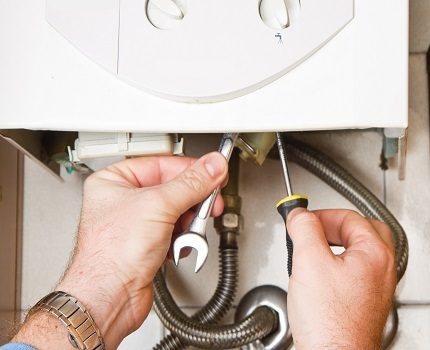

Allow only qualified technicians to install and configure the device. Self-connecting the column to the gas pipeline is not only fraught with fines, but can also cause an accident
Modern geysers Ariston are versatile and quite easy to use. To activate them, you just need to press a button.The required temperature on the brand's gas equipment is set using special control buttons - to supply hot water, it is enough to set 36-56 degrees.
It is also important to know that the water heater turns on immediately after opening the hot water tap. As soon as the user closes the tap, the column stops heating water. If the device needs to be completely turned off, then turn the external switch to the maximum and shut off the gas supply.
Advantages of a canister gas burner
Compared to oil burners, gas burners have many advantages. They run on environmentally friendly fuel, instantly ignite and do not leave any residual combustion products after their use.
Due to the use of gas, minimal attention can be paid to cleaning the interior of this device.
The portability and compactness of a gas burner on a small-capacity canister allows you to direct the flame stream at any angle that is necessary for the owner's comfortable work. This device can be used in various situations - when lighting raw firewood and charcoal, when soldering parts with tin-copper solders, when creating decorative patterns on wood, as well as in cooking - in order to caramelize sugar. And this is only a small part of the possibilities for using this product.
After purchasing this device, you must carefully study the instructions for use and safety. You can use the burner only strictly observing all the rules for its use. Overheating of the gas cylinder is unacceptable - it must not be left in the hot sun or near heating devices. After prolonged operation, a strong cooling of the reservoir occurs, which reduces the power of the torch. To avoid this, a special catalytic heating pad is put on the cylinder.
A gas burner will be a reliable and effective assistant for its owner. The presence of this device on the farm will be able to solve a lot of problems that may arise at any time. Its correct use will bring a lot of positive emotions, and will help to bring any ideas to life, no matter how difficult they may seem at first.
sledopyt.net
Application of torches for brazing and brass brazing
Soldering allows you to make a one-piece tight connection of two metal parts by a kind of "gluing" them with a kind of molten material - solder. The latter must exhibit high adhesion with respect to the metals being joined, that is, be very "sticky", and have sufficient strength after solidification.
The melting point of the solder must be higher than the operating temperature at which the brazed product is used; and at the same time lower than the melting point of the base material.
https://www.youtube.com/watch?v=ggEMjjg0JXI
A gas burner is just needed in order to heat the solder and thus make it viscous enough.
Obviously, for the convenience of its operation, its torch must maintain a stable shape and temperature.
The advantage of this tool lies in the ability to process areas with a large area - such a task will not be possible for an electric soldering iron.
At the same time, a simple, low-power burner can be made without much hassle with your own hands.
With the help of a homemade burner, you can do a lot of useful things. Its capabilities will be quite enough for soldering copper and brass vessels that are part of radiators, intercoolers and heat exchangers, as well as for soldering using solid solders.
In addition, only with the help of this tool, it is possible to disassemble the radiator in order to replace its core, as well as replace the honeycomb in it.
Such a burner will also come in handy during body repair, in which a high temperature is not only unnecessary, but also very undesirable, since it can cause warpage of this part of the car.
To carry out the restoration of a small damaged area, to solder the holes with brass, to carry out "jewelry" straightening - this tool will be quite suitable for all these works.
Slight heating will also be needed if it is necessary to dismantle a part fitted with an interference fit, that is, a pressed one.
This could be a bearing race or some kind of bushing.
This method is especially effective if the parts included in the joint are made of materials with different coefficients of thermal expansion.
The main characteristics of gas burners on a spray can
Gas burners on a canister have different power - it depends on the composition of the gas mixture and, accordingly, on the flame temperature, which can range from 1000 ° C to 2500 ° C. The gas pressure in the cylinder also plays a significant role for efficiency.
Some models have a built-in nozzle regulator, which allows you to change the diameter of the flame stream until the desired torch size is obtained. It is also possible to change the supply of the gas mixture from the cylinder. Thanks to this, the power of the device used can be increased.
Compact cylinders with liquefied gas have different types of connection to the burner - threaded or collet. The common gas mixture, which is filled in the tanks, allows the burners to be used at ambient temperatures between 5 ° C and 45 ° C. Special gas mixtures, which include isobutane / butane / propane (the so-called "winter mixtures"), allow you to work even at subzero temperatures. They make it possible to create a torch with a temperature of over 2000 ° C.
On sale there are models weighing 70 grams - excluding the balloon. This greatly facilitates the use of this device by the owner.
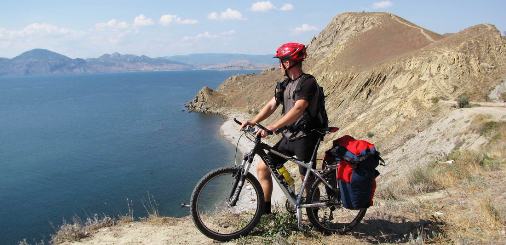

How to turn on the grill in a gas oven?
Many buyers tend to purchase an oven with a grill function. This is one of the most useful options for preparing delicious meals. Thanks to the grill, you can enjoy crispy chicken and you don't need to travel far to cook it over the fire.
Included with the grill function, in some models, a valve is attached, perhaps even a convention function or a fan, thanks to which the cooking time is accelerated. If there is no spit, it is worth turning the dish more often so that the heating is distributed more evenly. If there is no fan function, during operation, you need to keep the oven door ajar.
LABOR PROTECTION REQUIREMENTS DURING WORK
3.1. The gas cylinder must be firmly installed on a level, well-ventilated (ventilated) area and reinforced. 3.2. The use of gas cylinders for work in confined spaces is allowed provided that effective ventilation is ensured. 3.3. When working with a gas cylinder, it is necessary to take measures to prevent shocks, shocks, falls, and when working at an outside air temperature below 00 C - from freezing. 3.4. All devices connected to the gas cylinder (reducer, hoses, burner) must be in good working order and periodically checked: - burner - at least once a month for gas tightness; - gearbox - at least once a quarter, technical inspection and testing; - hoses - every day - for cracks, ties, etc. 3.5. Gas hoses must be free of cracks, ties, etc. 3.6. Before connecting the reducer to the cylinder, it is necessary to purge the reducer fitting to remove foreign particles from it. 3.7. The reducer must be attached to the gas cylinder only when the cylinder valve is closed. 3.8. After connecting the pressure regulator, slowly open the cylinder valve and set the working gas pressure. 3.9. The length of the hose, depending on the working conditions, should be in the range from 8 to 20 m. 3.10.Regardless of the place of work, the following distances from the gas cylinder to: - heat sources (for example, heating radiators) - at least 1 m must be maintained; - open fire - not less than 10 m. 3.11. When working with gas cylinders, it is prohibited to: - install cylinders in an inclined position; - install cylinders in aisles, driveways, in a place where workers are congregated, in poorly lit places; - expose cylinders to sunlight; - perform work without a gearbox; - use hoses made of separate scraps or interconnected by wire, clamps; - leave cylinders in operation with open valves unattended; - disassemble and repair the burner connected to the gas cylinder; - warm up the frozen gearbox with open fire; - smoking and eating in the workplace; - the presence of strangers. 3.12. Do not work with the gas burner near electrical appliances and other live parts that are energized. 3.13. If work is carried out near live electrical equipment, the electrical network must be disconnected before starting work. 3.14. While working with a gas-air burner, an employee is prohibited from: - moving outside the working area with a lit burner, including going up or down stairs, ladders, etc .; - hold gas sleeves under the arm, pinch with feet, wrap around the waist, wear on the shoulders, bend, twist; - smoke and approach the gas cylinder with an open flame less than 10 m. 3.15. During breaks in operation, the gas burner must be extinguished. 3.16. When working with a gas burner with an open flame in windy weather, the worker should be positioned, if possible, on the upwind side. 3.17. The cylinders must be protected from heating by sunlight or other heat sources. The maximum permissible temperature of the liquefied gas cylinder is not more than 45 ° C. 3.18
Liquefied petroleum gas is explosive, its leakage is not allowed, and when working with cylinders, care should be taken to prevent them from falling and hitting. 3.19
Complete burnout of gas from the cylinder is not allowed. A low burner flame indicates insufficient gas in the cylinder, clogged burner diffuser or cylinder capsule. 3.20. When using a gas burner, there should be no smell of gas. You can check for gas leaks by applying a soapy emulsion to the suspected gas leak. Checking gas leaks with fire is prohibited. 3.21. If the gaskets are worn out, they should be replaced with new ones from the kit. Burner and cylinder malfunctions should be repaired by specialized workshops. 3.22. Only one gas burner can be connected to one cylinder. 3.23. When working with a gas burner, it is not allowed to disassemble and repair burner and cylinder malfunctions and to leave a lit burner unattended.
Burner with two needles
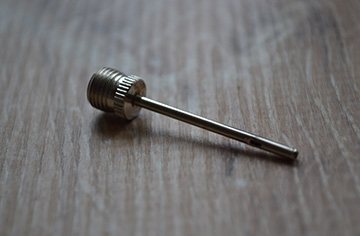

A very small, one might say, microburner, connected to a can for charging lighters, can be made from a very modest set:
- ball pumping needle;
- syringe needle;
- two systems for droppers;
- air compressor for aquarium.
In addition, you will need copper wire, a set of tools and materials for soldering, and glue.
Despite its modest size, this burner will turn out to be quite functional: the temperature of its torch reaches 1000C.
Here's what to do:
- Approximately in the middle of the needle for inflating the ball with a file, it is necessary to cut off a part of the wall so that a small hole is obtained. Its dimensions should be exactly such that the needle from the syringe enters inside.
- With the same file, it is necessary to cut off the sharp tip on the needle from the syringe, after which it is inserted obliquely into the hole made in the needle to inflate the ball. "Oblique" is so that the angle between the needles is approximately 15 degrees.At the same time, those parts of them with which the needles are connected to the pump and syringe should look in one direction.
- The entry point of a thin needle (from a syringe) into a thick one must be wrapped with copper wire, and then soldered. Thanks to this, the hole will be sealed, and the thin needle will be fixed relatively thick.
- Each of the needles must be tightly attached to the dropper system using glue and nylon thread winding. The systems have regulators, a kind of valves - they need to be moved to the "closed" position.
- The second end of the system, connected to a thick needle (for inflating the ball), must, again with glue, be firmly attached to the nozzle of the can for charging the lighters.
- The other end of the system, connected to the syringe needle, must be firmly attached to the discharge nozzle of the aquarium compressor.
Everything, the burner can be used. The gas coming from the cartridge and the air pumped by the compressor will mix in a thick needle, forming an air-gas mixture.
Their number and ratio can be changed using the regulators on the systems.
In the absence of an aquarium compressor, the compressed air source can be made from a plastic bottle:
- A hole is made in it from below, into which a spool or nipple is inserted from the inside. No glue is needed here - this element is securely fixed using the nut on it.
- A hole must be made in the bottle cap into which the syringe body is inserted (without the piston and needle). Its outlet, on which the needle is usually put on, should face outward.
- The place where the syringe is inserted into the cap must be properly glued.
- Next, the cap is screwed onto the neck of the bottle and a system connected to a thin needle is tightly connected to the syringe protruding from it with the help of glue.
It remains to pump air into the bottle through the spool - and the burner can be used.
The burner is the centerpiece of a gas boiler. A do-it-yourself gas burner for a boiler is made on the basis of a valve from an oxygen cylinder.
Read about the advantages of using a wood-fired electric generator in this material.

